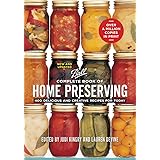Navigating Dairy Choices: A Comprehensive Guide to Healthy Dairy Products
As discussed in the accompanying video by Dr. Berg, understanding the nuances of dairy products is paramount for those committed to optimizing their health, especially for individuals adhering to specific dietary approaches like ketogenic or low-carb lifestyles. The distinction between the best and worst dairy is not merely a matter of taste but critically impacts overall wellness, digestive health, and inflammatory responses within the body. Therefore, an informed approach to selecting dairy is absolutely essential.
Understanding Dairy Quality: Grass-fed, Organic, and rBST
The journey to identifying optimal dairy begins with a critical examination of how milk-producing animals are raised and what they are fed. The labels “grass-fed,” “organic,” and “rBST-free” are not simply marketing terms; rather, they signify profound differences in the nutritional profile and safety of the final product.
The Superiority of Grass-fed and Organic Dairy
When dairy is sourced from 100% grass-fed cows, it indicates that the animals’ diet primarily consists of pasture forage. While the term “100% grass-fed” typically allows for a minimal deviation, often around 98%, newer certifications such as “truly grass-fed” specify a 95% grass-fed diet, demonstrating a commitment to more natural grazing practices. This adherence to a natural diet often translates into a dairy product with a superior nutritional composition. For instance, grass-fed dairy generally contains higher levels of beneficial omega-3 fatty acids and conjugated linoleic acid (CLA), both of which are associated with anti-inflammatory properties and improved metabolic health. Furthermore, these products are often richer in vitamins A and E, as well as antioxidants.
In parallel, the “organic” certification ensures that dairy products are produced without the use of synthetic pesticides, herbicides, or genetically modified organisms (GMOs) in the animals’ feed. This also prohibits the inclusion of animal byproducts, which, unfortunately, can legally be incorporated into the feed of non-organic livestock. Choosing organic dairy thus reduces exposure to potentially harmful chemical residues and ensures a more humane and natural diet for the animals.
The Concerns Surrounding rBST and Growth Hormones
One of the most significant distinctions between conventional and higher-quality dairy pertains to the presence of recombinant bovine somatotropin (rBST). This artificial growth hormone, manufactured by companies such as Monsanto, is administered to cows to increase milk production. While proponents often cite studies suggesting its safety, a contrasting perspective is evident in its global regulatory status.
It is important to note that the use of rBST has been prohibited in numerous developed nations for well over two decades. For example, Canada enacted a ban on this hormone in 2000. Furthermore, the European Union has disallowed rBST since 1990. The list of countries that have banned its use also extends to Australia, Japan, Israel, and Argentina. Such widespread international disapproval contrasts sharply with its continued legal use in the United States. Therefore, selecting dairy explicitly labeled as “rBST-free” is a crucial step for consumers seeking to avoid this particular growth hormone and its potential, albeit debated, implications for human health.
Opting for Healthier Dairy Alternatives
For those who choose to incorporate dairy into their diet, focusing on specific types and forms can significantly mitigate potential negative effects while maximizing nutritional benefits. The video highlights several options that stand out due to their processing, fat content, or fermentation profiles.
Ghee: A Pure Fat for Gut Health
Ghee, which is clarified butter, represents an excellent choice for individuals seeking pure dairy fat. Ideally sourced from grass-fed organic milk, ghee is created by simmering butter to separate the milk solids and water from the butterfat. This process removes lactose and casein, making it a more tolerable option for many individuals with sensitivities to these components. From a health perspective, ghee is rich in beneficial fatty acids, including butyrate, a short-chain fatty acid known for its positive impact on gut health and anti-inflammatory properties. Its high smoke point also makes it suitable for various cooking applications without degrading its nutritional quality.
Fermented Dairy: Kefir and Greek Yogurt
Fermented dairy products, such as kefir and Greek yogurt, offer distinct advantages, primarily due to their probiotic content. Kefir, a fermented milk drink, typically boasts a more diverse and potent friendly bacteria profile compared to traditional yogurt. This enhanced probiotic composition can significantly contribute to a healthy gut microbiome, supporting digestion and immune function. For those choosing kefir, opting for organic and grass-fed varieties is recommended to ensure the highest quality.
Greek yogurt, by virtue of its straining process, typically offers a higher protein content and fewer carbohydrates than regular yogurt. This makes it a more suitable option for those on low-carb diets, although it is important to scrutinize labels for added sugars. Even plain Greek yogurt can contain some naturally occurring lactose, so individual tolerance should be considered. When selecting any yogurt, sweetened varieties should be approached with extreme caution, as they frequently contain excessive amounts of sugar, undermining any potential health benefits.
Raw Cheeses: Goats and Sheep Varieties
For cheese enthusiasts, raw goat’s cheese or raw sheep cheese are often considered superior choices. “Raw” implies that the milk used has not been pasteurized at high temperatures, which is believed by some to preserve more of the natural enzymes and beneficial bacteria. Goat and sheep milk proteins also differ structurally from cow’s milk proteins, which can make them easier to digest for certain individuals. Naturally, ensuring these are non-GMO or, even better, organic and grass-fed, would align with the highest quality standards for these products.
Navigating Common Dairy Sensitivities and Health Concerns
Despite the potential benefits of high-quality dairy, it is crucial to acknowledge that dairy products can pose significant challenges for a considerable portion of the population. The video highlights two primary concerns: casein allergy and lactose intolerance, alongside broader dietary implications and specific health effects.
Casein Allergy: An Immune Response to Dairy Protein
Casein is the primary protein found in milk, constituting approximately 80% of its protein content. For many individuals, casein acts as an allergen, triggering an immune response that can manifest in various symptoms. These can range from digestive issues such as bloating, abdominal pain, and diarrhea, to more systemic reactions like skin rashes, respiratory problems, and even anaphylaxis in severe cases. An allergy to casein is a true immune system reaction, distinct from an intolerance, and often necessitates complete avoidance of dairy products to prevent adverse health outcomes. Therefore, those experiencing consistent digestive or other unexplained symptoms after consuming dairy are encouraged to consult a healthcare professional regarding potential casein sensitivity.
Lactose Intolerance: The Challenge of Milk Sugar Digestion
Lactose intolerance, a more prevalent issue than casein allergy, results from the body’s diminished ability to produce lactase, the enzyme responsible for breaking down lactose, the sugar found in milk. Human bodies typically produce lactase in abundance during infancy to digest breast milk. However, around the age of five, the production of lactase commonly decreases significantly, or even ceases entirely, in many individuals globally. Consequently, undigested lactose travels to the large intestine, where it ferments, leading to symptoms such as bloating, gas, cramping, and diarrhea. While not a true allergy, lactose intolerance can cause considerable discomfort. Products like lactose-free milk, which contain added lactase enzyme, or fermented dairy that naturally has lower lactose levels, can be tolerated by some, but many individuals find relief by minimizing or eliminating lactose-containing dairy.
The Risks of High-Sugar, High-Fat Dairy Combinations
A significant dietary pitfall arises when dairy, especially those high in fat, is combined with substantial amounts of sugar. This combination is particularly detrimental because it can lead to a rapid and pronounced spike in insulin levels. For instance, commercial yogurts often contain massive amounts of added sugars, transforming a potentially beneficial food into one that promotes inflammation and metabolic dysfunction. Similarly, ice cream, a classic example of high-fat, high-sugar dairy, is identified as particularly problematic. The simultaneous ingestion of fat and sugar can lead to rapid insulin spikes, contributing to fat storage and potentially impacting cardiovascular health over time. Even some products marketed as “keto-friendly” ice creams must be examined critically, as the video highlights that many can still contain six grams of sugar per serving, which is often considered too high for strict ketogenic protocols, where two grams or less is typically preferred.
It is generally advised that a high-fat diet should be consumed within a low-carb context. Conversely, combining a high-carb diet with high fat, or even high protein, is typically not recommended due to its potential to disrupt metabolic balance and encourage adverse health outcomes. This principle underscores the importance of scrutinizing food labels and understanding the macronutrient composition of all foods consumed.
Dairy and its Potential Impact on Specific Health Conditions
Beyond allergies and intolerances, dairy consumption has been associated with other health concerns for certain individuals. For example, excessive dairy intake has been implicated in potentially increasing the size of the prostate, particularly with specific types of dairy. Moreover, many individuals report experiencing increased mucus production or congestion after consuming dairy products, suggesting a widespread inflammatory or allergenic response. These observations contribute to the growing trend of individuals adopting dairy-free diets, often reporting significant improvements in various health parameters, especially within the context of ketogenic programs.
Making Informed Choices: Prioritizing Quality Dairy
Given the complexities of dairy products, informed decision-making is paramount. For those who choose to include dairy in their diet, prioritizing 100% grass-fed, organic, and rBST-free options is a fundamental step toward better health. Focusing on small amounts of high-quality dairy, such as organic ghee, grass-fed kefir, or raw goat/sheep cheese, can allow for some inclusion without overwhelming the digestive system or contributing to inflammatory processes. However, acknowledging the potential for casein allergy, lactose intolerance, and other sensitivities is crucial. Many people find significant health improvements by reducing or eliminating dairy entirely, especially when following strict dietary protocols like the ketogenic diet. The ultimate goal is to select healthy dairy products that align with individual physiological needs and health objectives.











